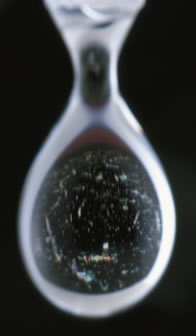Something in the Water
Brenda Goodman
| AMERICANS WORRY that many substances lurk in the water: lead, bacteria and mercury, to name a few. Now scientists suggest we should be concerned about drugs as well.
Prozac, Zoloft and dozens of other personal care products and pharmaceuticals (PPCPs) have been detected in minute quantities in treated wastewater as well as in the streams and lakes where wastewater is discharged. Last fall a report by a U.K. government watchdog made waves by charging that traces of Prozac had been found in Britain's drinking water. The government refuted the report. In the U.S., the Environmental Protection Agency has considered PPCPs an "emerging" concern for the last 5 to 10 years as antibiotic and prescription drug use has risen and new chemicals have been developed. "These things have probably been in the water for a while, but it's only in recent years that we've had the tools to detect such small quantities of chemicals," says Bryan Brooks, an environmental toxicologist at Baylor University in Waco, Texas. Brooks was among the first to spot antidepressants like SSRIs in rivers and lakes. He says these drugs are present in water in very small concentrations--parts per trillion. Antidepressants, like other drugs and vitamins, find their way into the environment after they are excreted and flushed into the sewage system. |
 |
Right now, researchers say PPCP concentration is almost surely too small to have any biological effect in humans, but aquatic animals are already affected. Brooks's latest study found traces of Prozac and Zoloft in three kinds of fish, Even so, at concentrations of nanograms per gram, a person would have to eat 1,344,086 servings of polluted catfish to consume the same amount of sertraline 5 in a 50 mg. tablet of Zoloft.
COPYRIGHT 2004 Sussex Publishers, Inc.
COPYRIGHT 2004 Gale Group
